Cats and Trails and Garden Tales
Musings on cats, travel, gardens and life
Northern Flickers Making Home in the Snag
Some years ago, my husband noticed one of our trees out front was dying, perhaps already dead. He brought out an arborist to take it down, who instead, convinced us to leave it standing as a snag.
He topped it and removed most of the branches, leaving a peculiar looking tree indeed and we had some explaining to do to the neighbors. (In fact, we had the arborist return and remove some of the scruffiest branches near the top.)

But he was oh so right! The birds love it!
According to the Washington Dept. of Fish and Wildlife, “Standing dead and dying trees, called “snags” or “wildlife trees,” are important for wildlife in both natural and landscaped settings, occurring as a result of disease, lightning, fire, animal damage, too much shade, drought, root competition, as well as old age.
“Birds, small mammals, and other wildlife use snags for nests, nurseries, storage areas, foraging, roosting, and perching.
“Snags enhance local natural areas by attracting wildlife species that may not otherwise be found there. All trees of all sizes are potential snags. Unfortunately, many wildlife trees are cut down without much thought to their wildlife value or of the potential management options that can safely prolong the existence of the tree. “
These pictures were taken last week, a pair of flickers, both busy working together, hewing out a nesting place to raise their young.

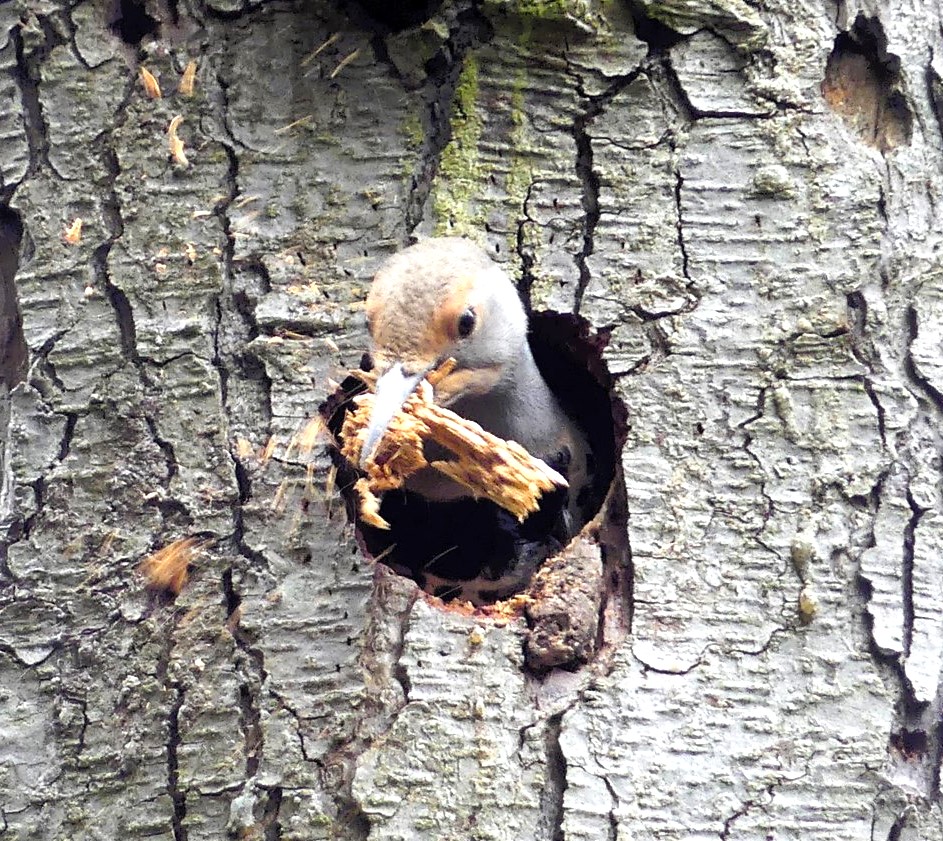
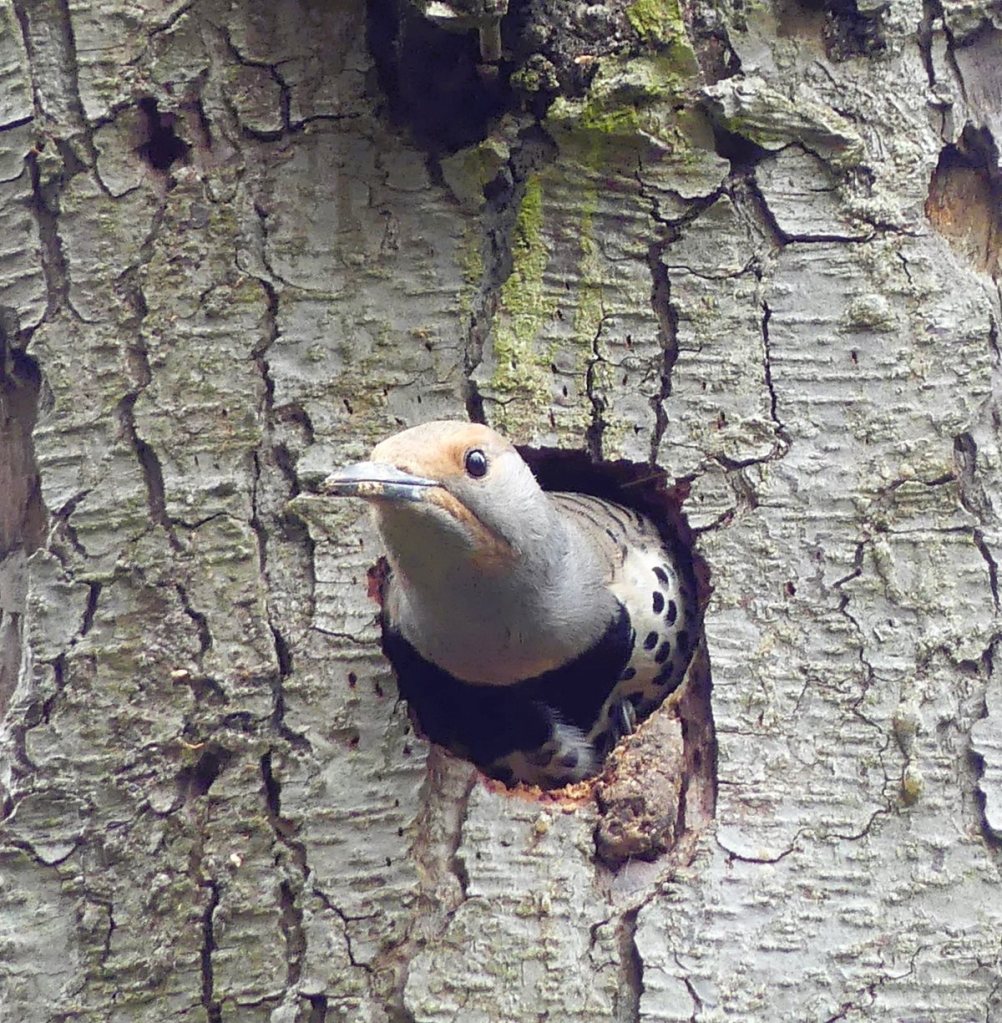

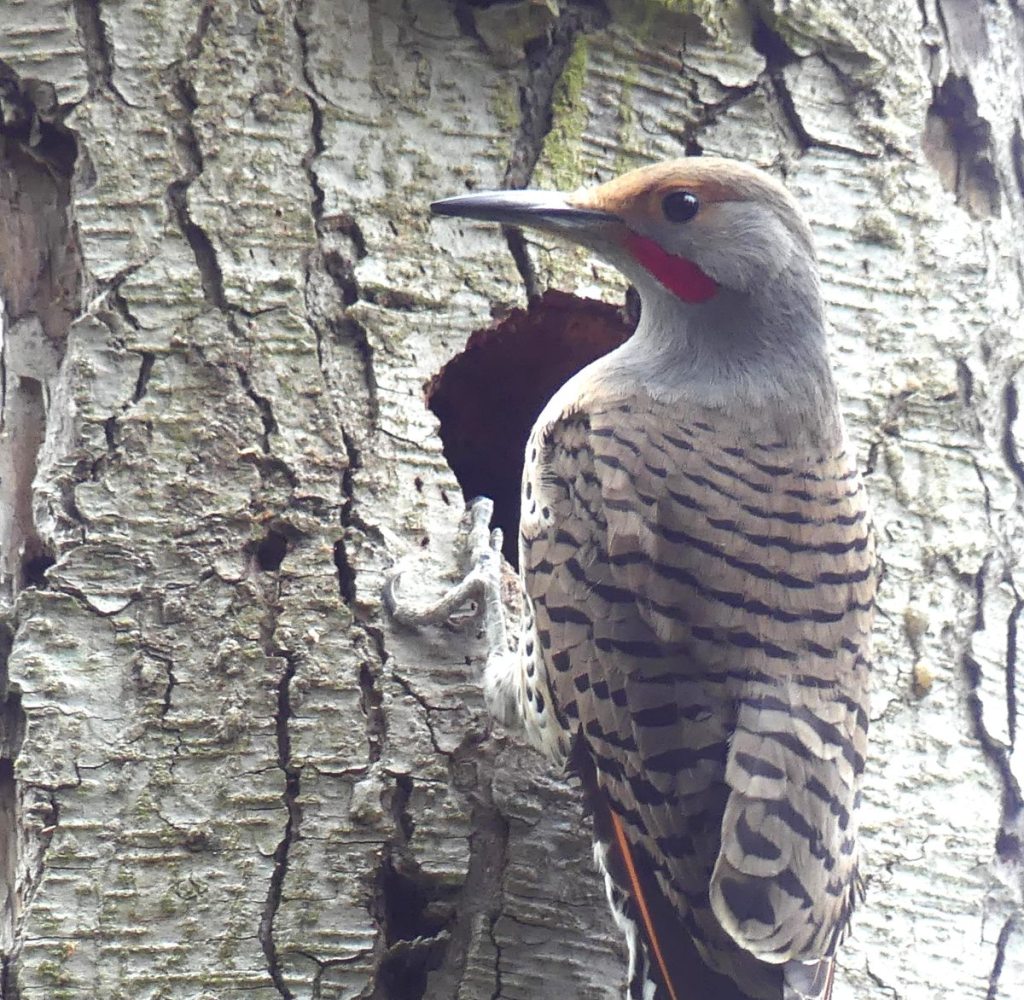
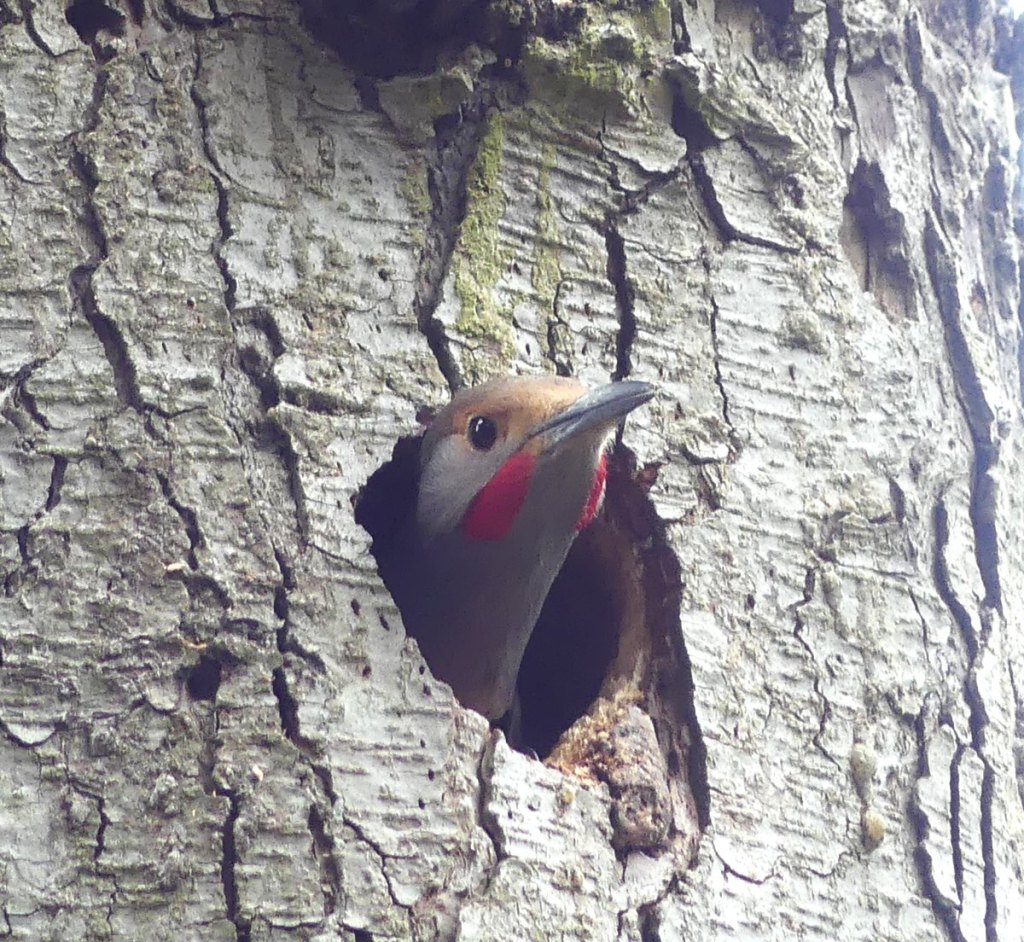
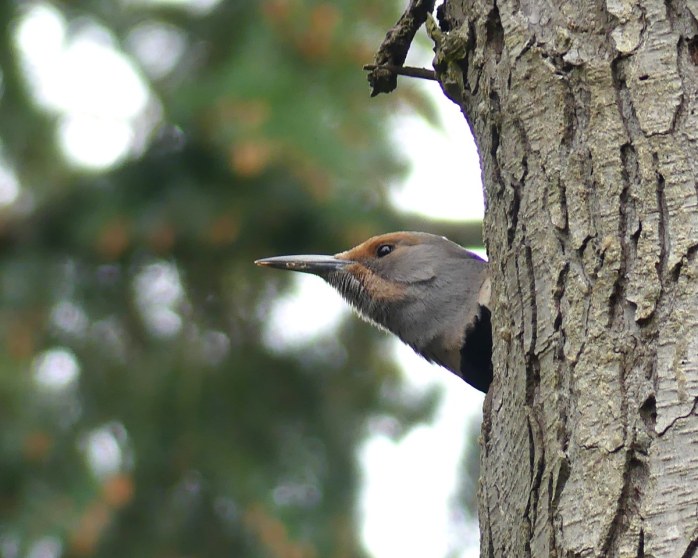
I was thrilled to watch them.
I hope the whole family finds the accommodations suitable.
~ Susanne

What a wonderful story. It made my heart sing!!
I’m so glad! Thank you so much! 😊
How wonderful the old tree gives new life and homes to our sweet birds, Susanne! I love seeing the Northern Flickers around here. Fabulous images of them at work! May they enjoy the lovely AirB&B!
Thanks so much, Terri! I love watching them work together! That snag is quickly becoming quite the gathering place!
If we leave it alone, Nature takes care of itself!
Yes, indeed! 😊
Such handsome birds! I hope they have a successful brood.
Yes they are! I hope so too!
Flickers are such handsome and distinctive birds. I hope you have fun watching them raising their family there.
They are handsome! I’m happy they found a home in the snag. 😊
One of the most distinctive-looking birds ever, though I can’t ever remember seeing them in a tree. They were always hopping around in the yard where I grew up.
They’re beautiful birds.I see them on the ground too and in the many evergreens in our yard. I’m happy they’re using the snag to nest.
Amazing photos!! I love Flickers and these closeup are amazing! Amazing I say!!
Thanks so much! I was happy to see them working away in the snag, oblivious to me and my camera!
Simply wonderful close ups of those busy birds, Susanne!
Best wishes, Pete.
Thanks so much, Pete! I was happy to watch them building their nest!
How exciting to have these tenants in your snag! I’ve never heard that word used for an old tree trunk; it’s such a great idea to leave it in place for the wildlife to make use of like this 🙂
I’m so glad we left it standing!Snags can be of all sizes but I usually think taller than a tree stump when I hear the term. All sizes are good for wildlife and I’ve seen many different birds use the snag, from the smallest (chickadees) to the largest (owls!)
So great that the tree has provided such a nice nesting site for some beautiful birds.
Yes, I am so happy it worked out for the birds!
This post made my happy. I too know the value of dead trees in the landscape. I am glad you left this important habitat to be used by wildlife.
Thanks so much! Glad to hear it!
Awesome pictures ! 😲
I’m glad you like them! 🙂